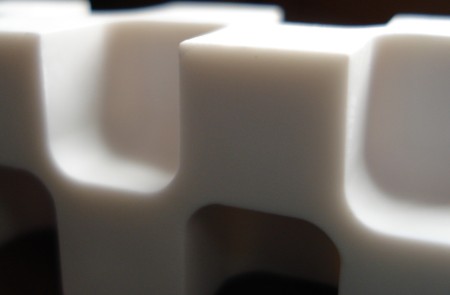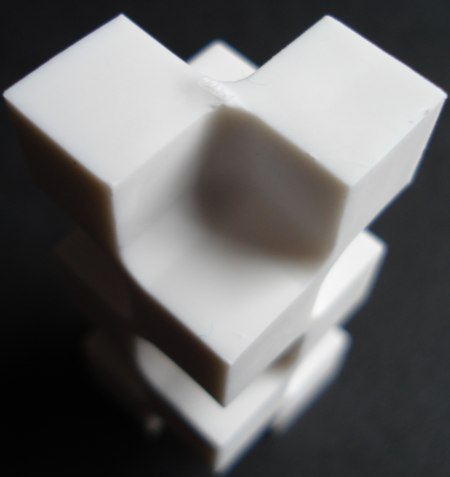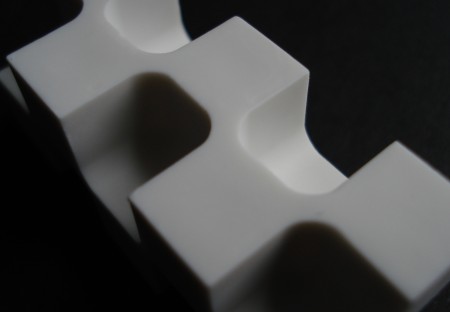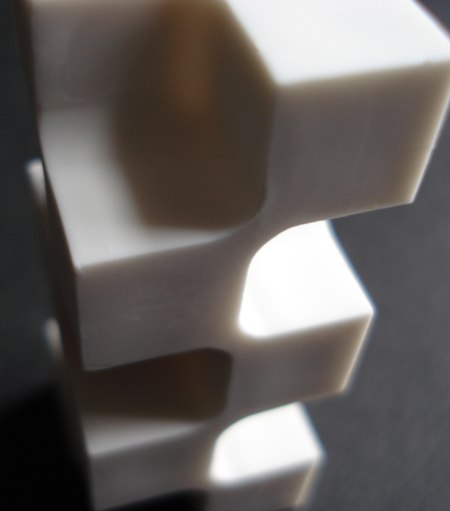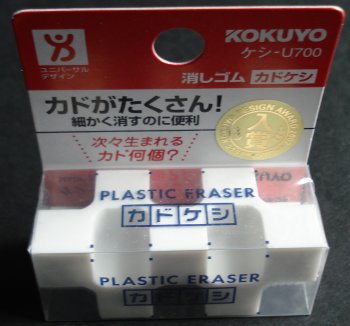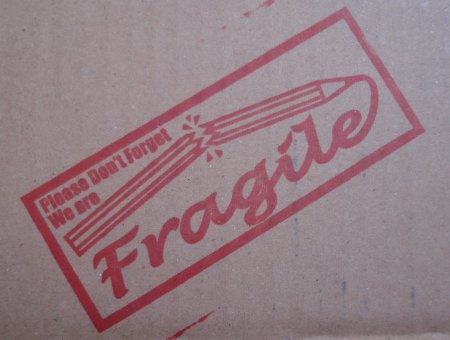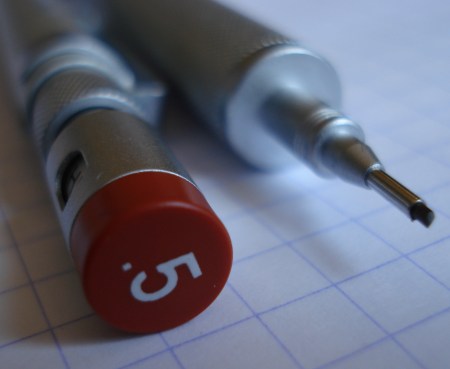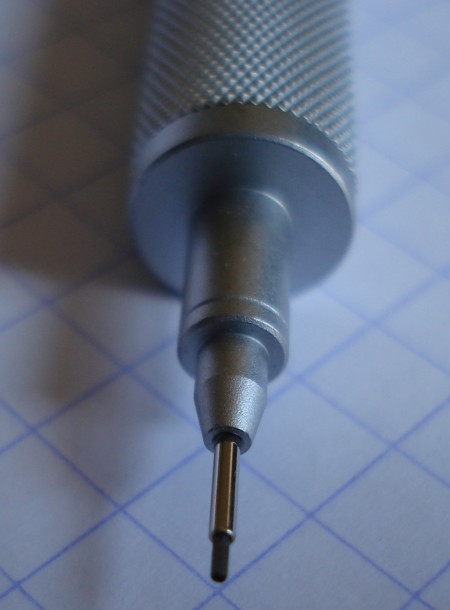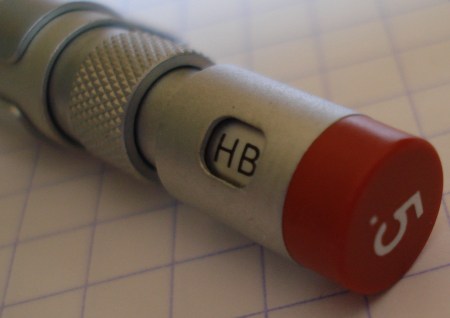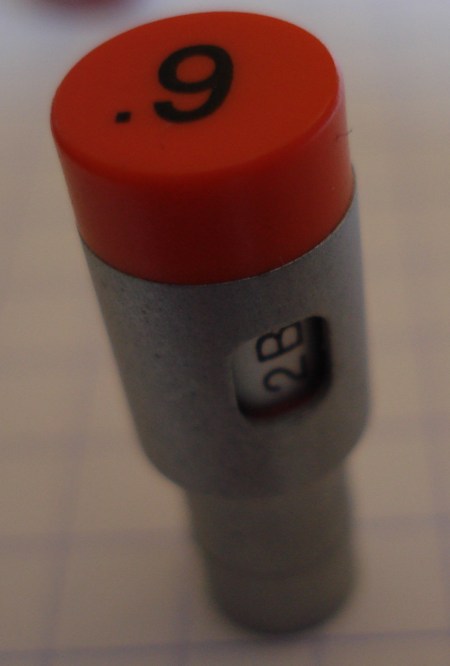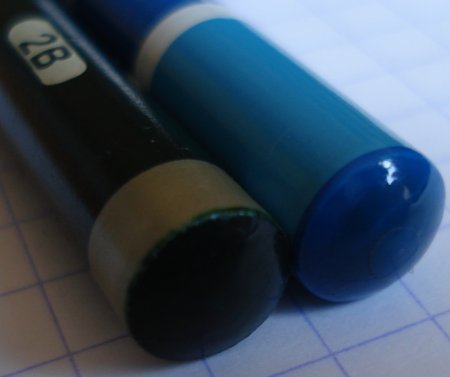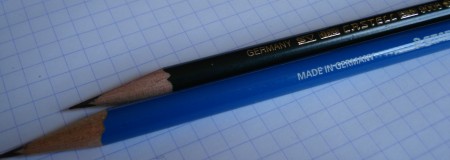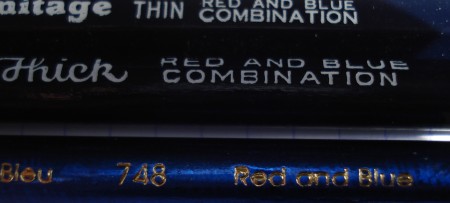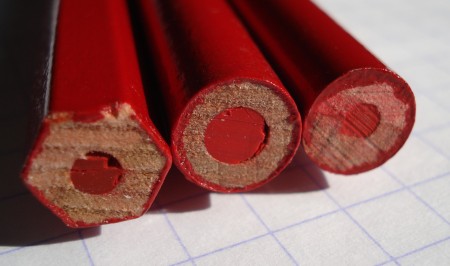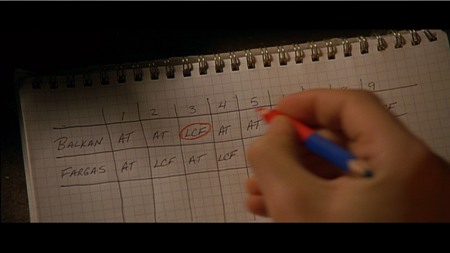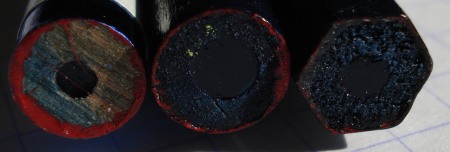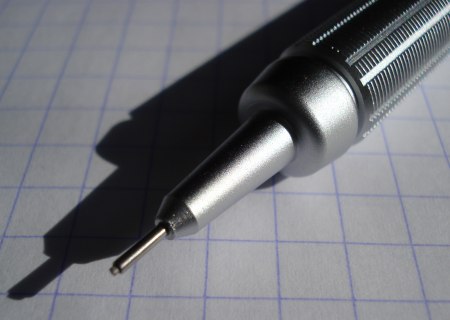
As well as woodcase pencils, the Craft Design Technology brand offers item 16, a 0.5mm drafting pencil.
The pencil is made for CDT by Pentel.

The white plastic barrel is distinctive, with lettering in black. I’m not exactly sure what the tip, grip, and clip are made of. They appear to be another type of plastic, though finished to look like metal.

At approximately 15.5g, it also feels substantial, and there seems to have been some effort exerted in creating a very comfortable balance and grip.

The design seems much more evolved than the micro, for example, yet it’s still a usable and functional pencil. I tend to think the white will get discolored over time, but maybe not – Pentel probably knows what they are doing.

At ?1,890 , there is some “design premium” in the price compared to similar plastic drafting pencils.
The lead grade window (in the cap) goes from 3H to B, but I’ve been using 2B. Who decided that 3H needed the space more than 2B? I didn’t mention it, but the 925 95 (featured last week) has a window that goes from 2H to 2B.
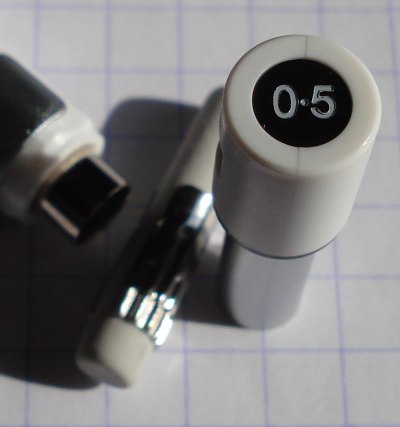
The pencil is pleasant enough, and the design and colour scheme would be the main selling points. The pencil is packaged with a cardboard box, and could make a nice gift.

